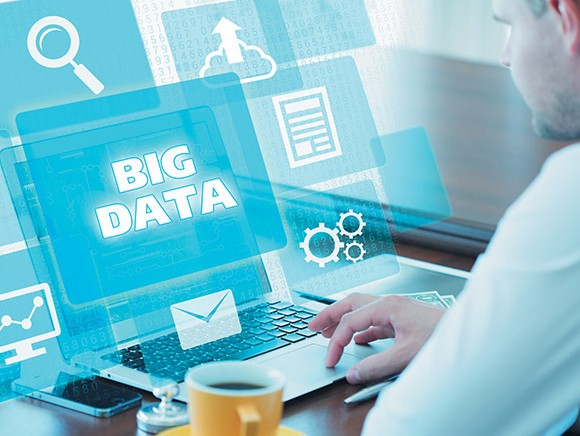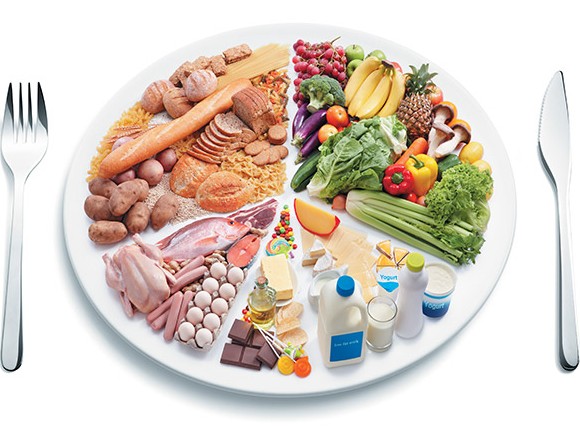
What lies ahead for the food industry in the coming years? Which social developments will have a strong impact on the food sector? What will drive innovation? We have prepared this overview of three important topics for you: sustainability, digitisation and health.
From a global perspective, sustainability – i.e. concern about the climate – is by far the most important topic for 2016. This topic is inextricably linked to food production. “Innovation is the key to sustainable food security,” stressed the Agriculture Commissioner Phil Hogan in his speech at the opening of the FoodDrinkEurope Congress 2015 during the World Expo in Milan. “Through innovation, we can improve resource-efficiency, adapt to climate change, improve food safety, diversity and quality while maintaining the competitiveness of the agri-food sector and creating more and better jobs in rural areas.”
“The climate agreement reached in Paris can be a turning point for our planet,” said Martin Schulz, President of the European Parliament, at the start of the plenary meeting in Strasbourg on 14 December 2015. He welcomed the deal as “historic and trendsetting” but underlined the fact that it was now time to turn words into deeds. “It is a universal agreement because now – for the first time – every country in the world has agree to contribute to tackling climate change. And it is historic because everyone recognises the need to limit the increase in the global average temperature to below the 2 degree Celsius threshold. Moreover the agreement is trendsetting because the aim is to make the planet climate-neutral in the second half of this century. In other words, we will not emit more greenhouse gases than the Earth can cope with,” continued Schulz. The general necessity to improve sustainability affects many sectors, but food production seems to be the one under the most fire; meat and dairy production in particular are subject to a constant stream of criticism.
Sustainability is also a marketing instrument. “Food retailers and food service companies are continually looking for ways to set themselves apart from their competitors. Sustainable products can help,” states the ‘Duurzaam produceren in food, what’s next?’ (Sustainable Food Production - What’s Next?’) sector update published by ABN-AMRO in December 2015. The bank expects that ‘sustainable buildings’ will receive more attention within the topic of ‘sustainable production’ in the year ahead. “When evaluating their suppliers, ever-more retailers and food service companies will also consider those companies’ attempts to improve the sustainability of their business premises,” predict the authors of the report. One key driver behind sustainable production is the reduction in operational costs: “Within the food industry this is virtually essential in order to maintain or increase competitive edge. New buildings with sustainability certificates often achieve a more than 20% reduction in energy costs.” The good news for businesses is that sustainability is often strongly supported by the government. In the Netherlands there are various financial incentives in place to make sustainable business premises more feasible.
The New York Times recently listed ‘climatarian’ in its Top 10 of new food words, defining it as “a diet whose primary goal is to reverse climate change”. This includes eating locally produced food (to reduce energy spent in transportation), choosing pork and poultry instead of beef and lamb (to limit gas emissions) and using every part of ingredients (apple cores, cheese rinds, etc.) to limit food waste.

The digital world is advancing at an ever-faster pace; we are organising, working and doing more and more things online. The number of online shoppers is still growing. Research by Statistics Netherlands (CBS) from 24 July 2015 revealed that in 2014 10.4 million internet users in the Netherlands had purchased something online at least once. The number of frequent e-shoppers in particular has strongly increased in recent years, rising from 3.9 million in 2005 to 7.9 million in 2014. In fact, in the first quarter of 2015 the online retail revenue grew faster than the total revenue of the retail sector.
During the Consumer Electronics Show in Las Vegas in January, a mobile app was launched which enables you to order and pay for groceries directly from your fridge. Digitalisation is an important driver behind changes in the private sector. Therefore, the ongoing digital transformation can also be seen as a continuous form of – and source for – innovation. And innovation is essential, especially when it comes to developing and maintaining software that will still work in the future. Software aging impacts on the sustainability and reliability of our digital infrastructure. It makes the digital infrastructure vulnerable to intentional external attacks, and that exposes the flip side of the euphoria about the unlimited opportunities: ‘big data’ is valuable. The predictions are that an intense power struggle could erupt over data property rights.
‘Big data’ is one of the major topics on the Dutch National Research Agenda (Nationale Wetenschapsagenda/NWA), which was presented in late November 2015. This agenda is aimed at taking science in the Netherlands to the next level. One important research question is how we should achieve a balance between the freedom of information and privacy. The question highlights the fact that freedom of information offers society lots of new opportunities and chances, such as the use of big data to fight crime or the access to medical information for research purposes. On the other hand, freedom of information leads to countless new questions: who has access to which data, and who manages that data? Who has ownership of the information stored? How can we prevent data misuse? Can we guarantee privacy through a set of legal instruments or through technological measures?
Following over three years of negotiations at European level, preliminary agreement was recently reached on the new European privacy law. Europe plans to introduce a strict package of measures to ensure that citizens regain control over their own (big) data. Companies that refuse to comply with these measures risk sky-high fines and companies that are unable to comply with them will eventually vanish from the market. The legislation will increase the administrative burden and, for many companies, it will be a considerable challenge to comply with it on time. It will be mandatory for all European companies to provide much more insight into their processes and data. Companies must report any data leaks within three days. Larger organisations will need to employ a Data Protection Officer (DPO). The fines for non-compliance can be as high as 4% of the global revenue, capped at EUR20 million.
LEI Wageningen UR stated in its Agricultural Economic Report 2015 that the Dutch agricultural and horticultural sectors can do much more to capitalise on the online food shopping trend. The online market is expected to grow to 25% of the total market by 2020, according to LEI. The institute concluded that “the agri-food sector often focuses on a single sales channel, while consumers already switch smoothly between making online and offline purchases. This trend represents new chances for the sector. For example, farmers and growers could start an online delivery service in addition to their physical stores on their premises.” This online market requires other forms of collaboration and new concepts that support the online sales and home delivery activities. The most important challenges are logistics efficiency and temperature-controlled transport. The Netherlands is not a pioneer in online food retailing; online food shopping is much more established in neighbouring countries such as the UK. Buying food in shops is becoming discretionary, according to the LEI report.
Healthy food products have been a trend for many years, but that trend is becoming stronger all the time. Regional products and fresh products are gaining in popularity. Studies of what is and isn’t healthy regularly make the headlines (should we or shouldn’t we be eating bread, red/processed meat, farmed fish, genetically modified soya, etc.?) This year, at EU level, the Dutch government is focusing heavily on product improvements and reaching agreements on reducing in the amount of fat, sugar and salt in our food. In the report called ‘Voedselagenda voor veilig, gezond en duurzaam voedsel’ (Food agenda for safe, healthy and sustainable food) the government announced it would be organising a conference on this topic during the Dutch EU presidency “in order to boost a joint approach to actions to improve products in the EU”.

Despite all the changes, one question remains the same and is posed daily: “What’s for dinner?” Probably not insects because, although insect consumption is on the rise, we in Europe still need to get used to the idea. And we won’t all be switching to seaweed in the near future either, nor will we suddenly all become vegans. So what is on our plates? The answer is: pulses! The Food and Agriculture Organization of the United Nations (FAO) has declared 2016 to be the International Year of Pulses. All around the world, initiatives are being organised to heighten public awareness of pulses as a source of nutrition. Not only are pulses are healthy but the production of pulse crops is relatively environmentally friendly. Within this context, the Nationaal Comité Bonen (National Pulse Committee) has been set up in the Netherlands to facilitate collaboration between various public sector organisations and the private sector.
What else can we expect to have on our plates, literally speaking, in the future? The Netherlands Nutrition Centre Foundation (Voedingscentrum) is working hard to convert the Health Council of the Netherlands’ existing and new recommendations (which were published in November 2015) into new healthy-eating guidelines as quickly as possible. When the guidelines are announced later this spring, they are sure to make the headlines.
Source: ©Ase/Shutterstock.com - ifong/Shutterstock.com - Den Rise/Shutterstock.com